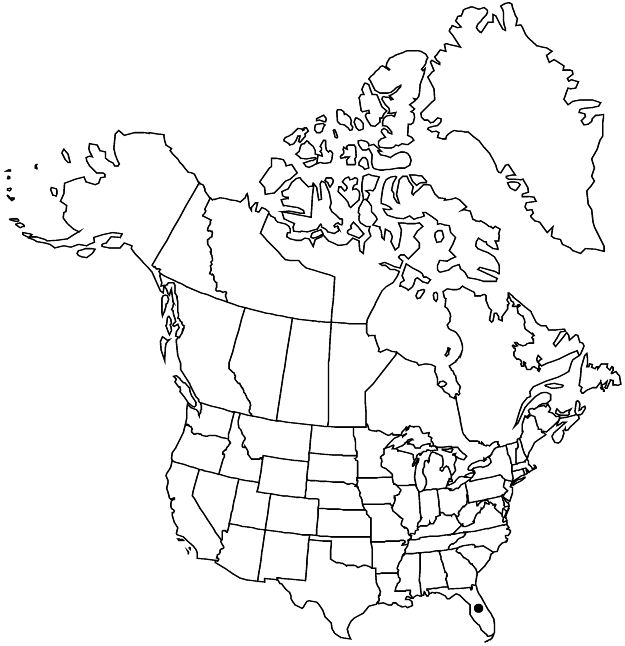Begonia hirtella
Enum. Hort. Berol. Alt. 2: 396. 1822.
Plants annual, ± densely brownish-villous (hairs multicellular). Stems 8–15[–90] cm. Leaves: stipules lanceolate to narrowly ovate, 5–10 × 2–4 mm; petiole 12–32 mm, ± densely villous; blade strongly asymmetric, ± ovate to ± cordate, (12–)15–90 × (11–)22–70 mm, base rounded to shallowly cordate on shorter side, rounded to cordate on longer one, margins shallowly or not lobed, crenate, ciliate, apex acute to acuminate, surfaces appressed-pilose. Peduncles 20–22 mm (in fruit); bracts linear to ovate. Flowers pinkish; staminate: tepals 2–4, outer 2 suborbiculate, 2–4 mm, inner 0–2, lanceolate, 4 mm; stamens 6–9[–22]; pistillate: tepals 5, oblong to obovate, 2 mm. Capsules 5–10 × 4–6 mm, larger wings deltate-rounded, 6–10 mm wide, smaller 2–5 mm wide.
Phenology: Flowering spring.
Habitat: Around solution holes of rockland hummocks, greenhouse weeds
Elevation: 0–10 m
Distribution

Introduced; Fla., West Indies, South America.
Discussion
Begonia hirtella is naturalized only in Miami-Dade County; it is also a weed in greenhouses. A specimen similar to B. hirtella, collected in Palm Beach County on a floating, rotting log in a cypress strand (Bradley and Woodmansee 1239, FTG), is glabrous and cannot be determined in its vegetative condition at the present time; it is unknown whether it has persisted.
Selected References
None.